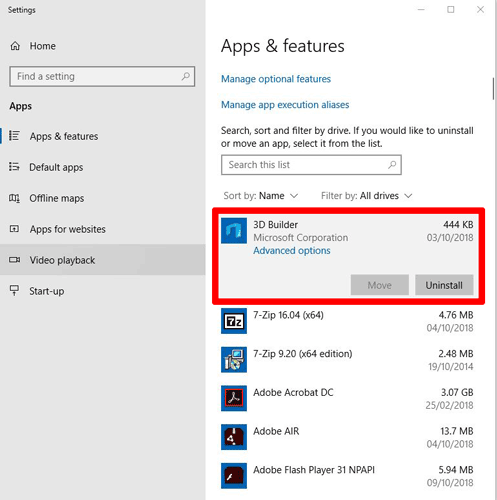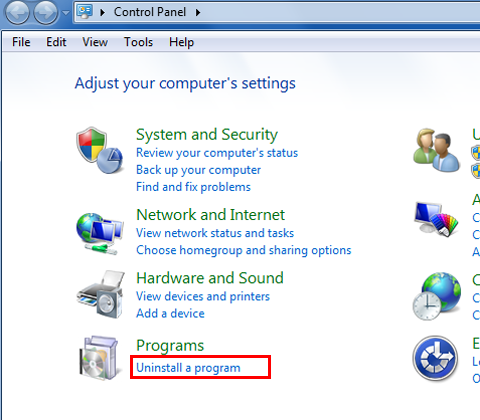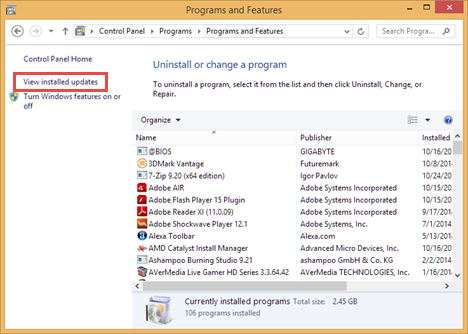After you upgrade to a newer version of Windows, one of the most common problems users face is BSOD (Blue Screen of Death) error messages. The most common BSOD error that people face is Kernel_Data_Inpage_Error (also happens after anniversary update). This error is due to an unstable registry or corrupt user profiles and causes erratic system behaviour including constant BSODs, freezes and crashes. So if you have just upgraded to Windows 10 anniversary edition and are facing Blue Screen of Death issues, follow this guide for fixing BSOD errors in Windows 10 in five simple steps.

If you’re a Windows user, I bet there’s at least one instance when you have encountered the infamous “Blue Screen of Death” amidst you doing some important tasks on your PC.
For sure, panic instantaneously follows as you look at your screen turned bright blue – displaying either a huge sad face with texts at the bottom of confusing codes that don’t even mean a thing to ordinary users (unless you’re a programmer or developer).
In this article, we’ll delve into details of this “Blue Screen” all about and what steps can be taken to prevent this from happening.
What is the Blue Screen of Death?
Abbreviated as BSOD, the Blue Screen of Death, Stop Error, or Blue Screen, is the infamous generic term used when a Windows computer displays a set of error messages when unexpected and serious glitches occur.
Technically, when you see a Blue Screen, that means your computer will not be able to function. Subsequently, the system will prompt a series of commands that will result in thorough internal checks and a necessary, imminent restart. Data loss is expected when Blue Screen occurs, much to the misery of the unsuspecting user.
What Causes BSOD?
BSOD is always an unwelcome spectacle to witness. At times, they occur when you’re just starting your PC, while you’re performing an upgrade to your current Windows OS, or out of nowhere.
Usually, Blue Screens are closely related to Malware or Virus, crashing low-level software drivers, incompatible applications, or hardware blunders.
In general, Blue Screen errors are rare events. However, if this happens to you more frequently than not, chances are you have serious trouble with your PC and should seek help from IT professionals to rectify the issue. Otherwise, you’ll end up buying a new PC.
5 HACKS AGAINST BSOD
Although several factors play a role in causing BSOD, luckily, there are also a few troubleshooting hacks to quickly resolve the issue and get you back to working status. Here are 5 of them:
Restart your PC
A not so secret technique in fixing BSOD is simply restarting your PC. If the system does not prompt an automatic restart, proceed by pressing the power button off until the system has come to a complete shutdown. After a few seconds, switch on the PC again.
Scan your PC for Viruses or Malware
Sometimes, when a Malware or virus infiltrates your PC, they tend to alter some files in the system, thus resulting in BSOD. It’s best to perform a thorough scan on your PC from time to time to remove viruses or Malwares and prevent BSOD.
Uninstall Incompatible App
Sometimes, the problem is in applications incompatible with your PC. Follow the steps below to uninstall a conflicting app on your PC:
- Go to Settings.
- Tap on Apps.
- Click on Apps & Features.
- Choose the shady app that may have caused BSOD and click Uninstall.

- Follow the remaining on-screen instructions to complete the uninstall process.
Uninstall buggy updates
Updates that are not properly installed or have bugs may also cause BSOD. Follow the steps below to remove a Windows update that is causing BSOD:
- Go to the Control Panel.
- Below Programs, click on Uninstall a program.

- Tap on View installed updates located on the upper-left corner.

- Click on the most recent update (refer to the date on the Installed On column)
- Click on Uninstall.
- To complete the steps, restart your PC.
Disconnect Non-essential Peripherals
BSOD can sometimes happen due to related hardware problems, especially after connecting a new one to your PC. The cause might be incompatibility, the device itself is faulty, or the OS is installing the wrong driver.
Nonetheless, it’s best to disconnect unnecessary peripherals such as printers, external hard drives, and other USB devices when not essentially needed to minimize stop errors.
Final Words
For sure, experiencing the infamous Blue Screen of Death on all Windows versions can be a horrifying experience. Fortunately, various hacks can rectify this issue and prevent it from happening again.
However, if BSOD persists, it’s best to reach out to professionals and seek help.
Summary: Fix BSOD or Blue Screen of Death
- Search for the error
- Find the offending driver or device
- Make a backup
- Uninstall the driver or application that is associated with the BSOD mailfunction.
- Use System Restore or Last Known Good Configuration to undo recent registry and driver changes.